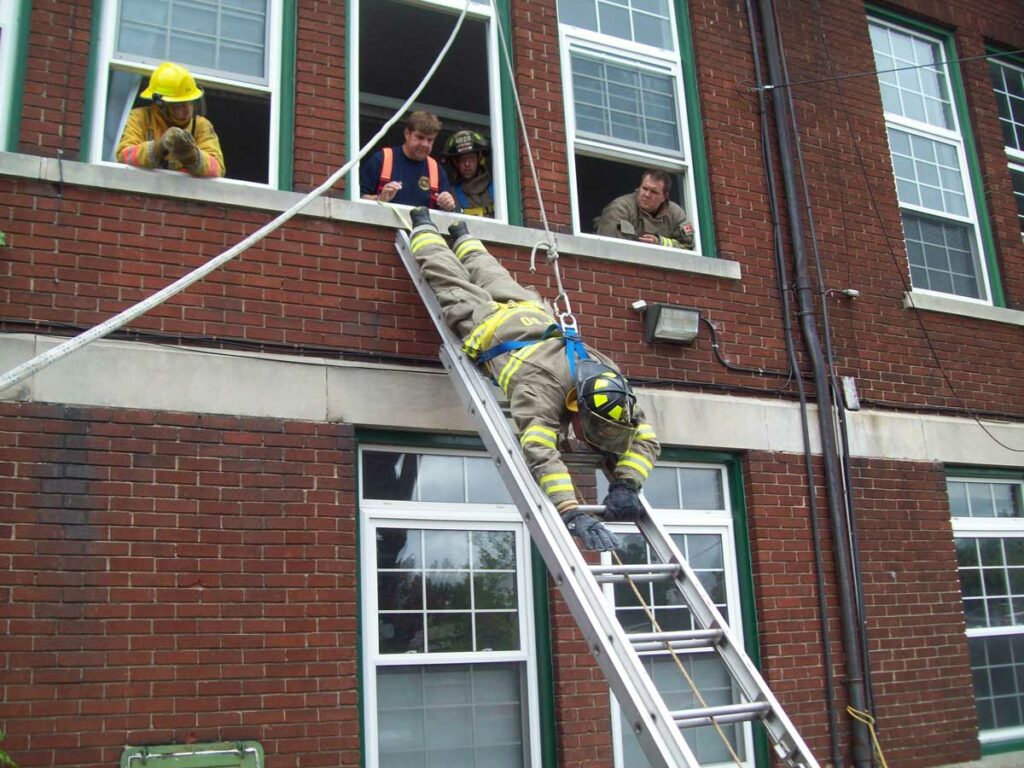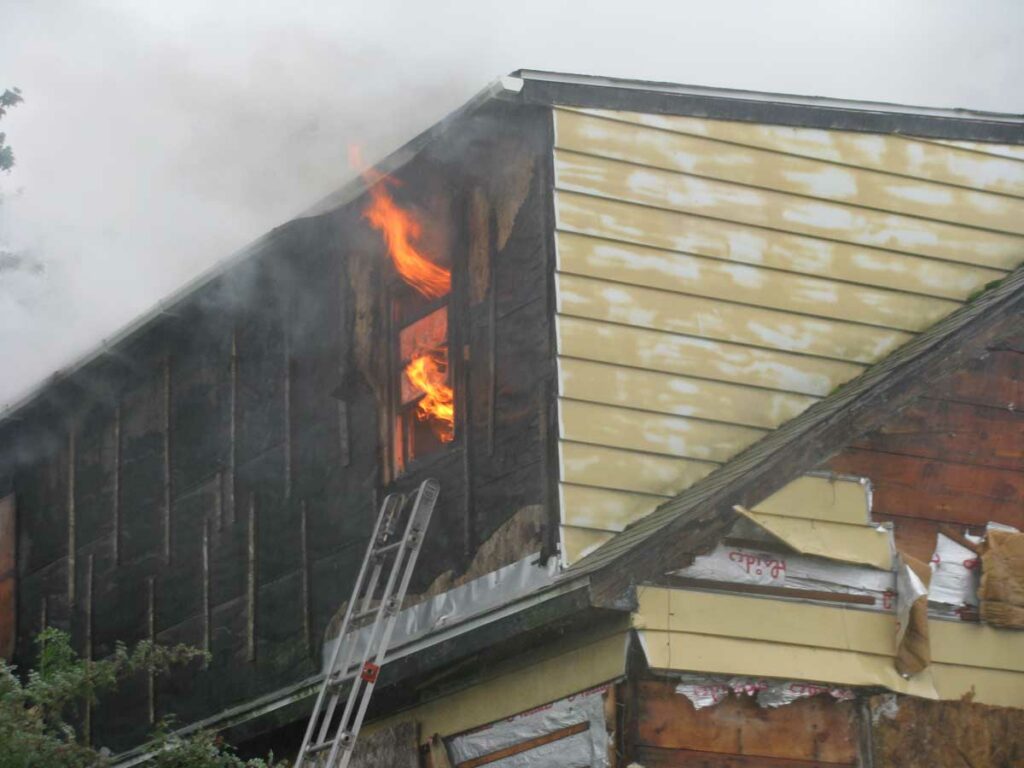Photos by Mark van der Feyst
In a previous article we looked at the issue of setting the ground ladder at the proper climbing angle and different issues surrounding not having the exact 75-degree angle set. It’s fitting to continue our discussion, then, by looking at ladder tip positioning when firefighters raise the ground ladder.
In recruit firefighter training, we have been instructed to position the ladder tip at different places depending upon what task is being accomplished: ventilating a window, applying water in a window from a hoseline, rescuing an occupant from a window, and gaining access in through the window (both single and double wide windows). All these different tasks require the ladder tip to be placed at a different position on the building in relation to the window. These are the basic ladder tip positions that we teach our new recruits based on the textbook—a good foundation to build upon from.
- Firefighting Basics: Ladder Tips
- Firefighting Basics: Heel from the Front
- Throw Back to Basics: Ground Ladder Tip Placement
- Are You Ground Ladder Savvy? Part 1 | Part 2
Although we need to continue teach the textbook for our new firefighters and lay a good foundation in training, the question hopefully being asked by our new firefighters is: “Is there just one position that can be used for any and all tasks?” The answer is yes, there is one position that can be used for any task that we are assigned when laddering to a window.
The best position that a ground ladder should be set to is with the ladder tip at the bottom of the windowsill—all the time, every time. For us to understand this, we must first answer the question of why we are laddering the window in the first place. There are two main reasons: access and egress. The access portion involves the rescue of the occupants from inside the building, venting a window, spraying water into the building. The egress portion involves firefighters needing to get out of the building quickly.

When firefighters need to exit a building quickly, it is due to a life-and-death situation. Either they stay where they are and die or do something to get out and live. The “doing something” might involve doing a headfirst ladder dive—if there is a ladder at that window. In photo 1, you will see a training exercise taking place where a firefighter is practicing this technique. Notice the ladder tip is at the bottom of the windowsill. This allows for quick, unimpeded egress for the firefighter. Were the ladder tip off to one side of the window or above and to the side or even a rung or two inside the window, the firefighter would not be able to exit quickly and would be impeded.
- THE HEADFIRST LADDER SLIDE: THREE METHODS
- Training Days: The Head-First Ladder Slide
- Throw Back to Basics: Bailout
There is a good video showing a Toronto Fire Service firefighter and officer exiting a house bedroom window in an effort to get out as soon as possible. They get caught up and slowed down because the ladder tip is raised one rung into the window and above the windowsill. Had the tip been dropped down below the sill, there would not have been any issues.
For gaining access to the building the ladder tip at the windowsill will work for all tasks assigned, as in photo 2. In the case of venting a window, putting the ladder tip to one side is designed to protect the firefighter from having a glass falling on them as well as the heeling firefighter. When the ladder tip is at the windowsill, the firefighter on the ladder tip is still protected from having any glass falling on them. This can be accomplished by using a six-foot pike pole or roof hook to break the glass while standing about four to five rungs down from the top.

By standing this far down on the ladder, the firefighter is out of the direct path of the falling glass. It also keeps the firefighter’s head even with the windowsill, providing protection from the hot gases exiting once the window has been vented. This is also the first action step in vent- enter-search tactic being conducted if the need arises–the ladder tip must be at the windowsill for this to work.
If the heeling firefighter is standing behind the ladder, the member will get rained on by glass, but if heeling from the front, the member will be protected.
To apply water into the building through the window, the same action steps can be duplicated as above. The firefighter is protected from the exiting hot gases and steam while at the same time being in the lower cool zone of the flow path (unilateral or bi-lateral).
The most important task that we need to accomplish in gaining access to the building is for rescue. Removing an occupant from their bedroom or from a second- or even third-story room requires the ladder tip be at the windowsill. This will provide no interference with the passing out of the occupant onto the ladder into the firefighter’s arms. This is the one main reason why we ladder buildings—laddering for life.
Imagine setting up a ladder to vent a window as the textbook calls for only to then having to execute an occupant rescue. This would require the firefighter to climb down the ladder to reposition it for the rescue. How much time would this take? What if this were you needing to be rescued? Would you want this extra time to be taken so that you can be rescued? I would hope that your answer is no, you would not. Ladder the building with the tip always at the windowsill.
Having the ladder tip at the base of the windowsill will also allow for a quick transition to go from a defensive position or action on the ladder to an offensive action on the ladder. Having to make entry into the structure can be easily accomplished without having to reposition the ladder from another position to the windowsill lip. There are many reasons why offensive action may be required by the firefighter on the ground ladder, perhaps to rescue or assist another firefighter in need or an occupant.
Always ladder to bottom of the windowsill.

Mark van der Feyst has been in the fire service since 1999 and is a firefighter with the Fort Gratiot (MI) Fire Department. He is an international instructor teaching in Canada, the United States, and India, and at FDIC. He is also the lead author of Residential Fire Rescue (Fire Engineering Books & Video). He can be contacted at Mark@FireStarTraining.com.

